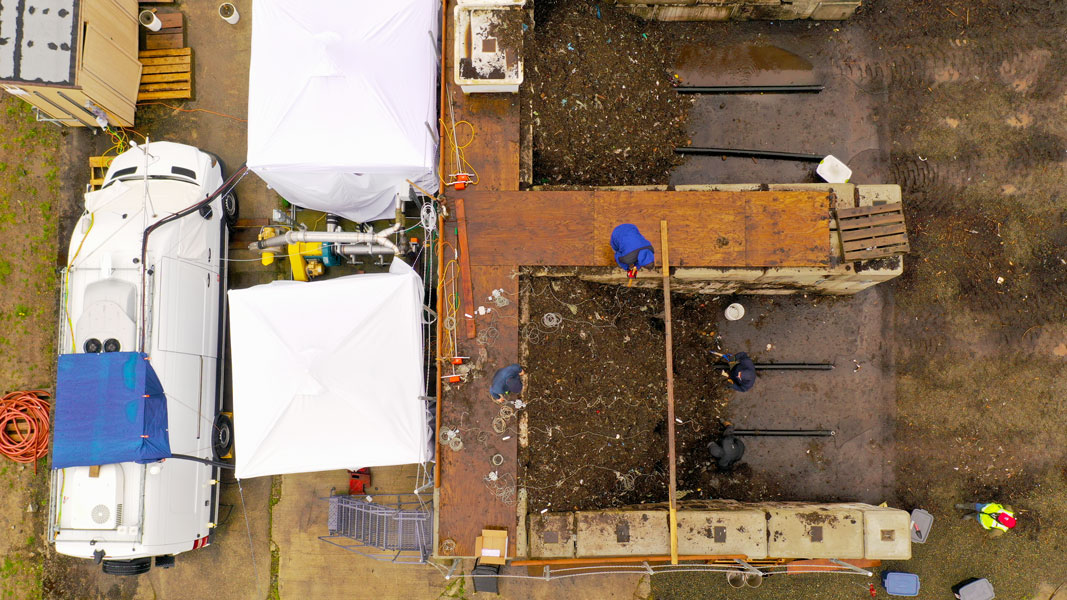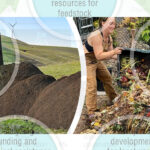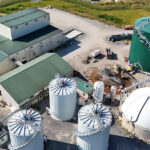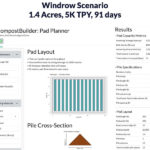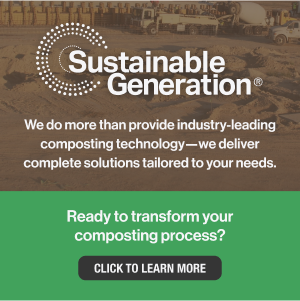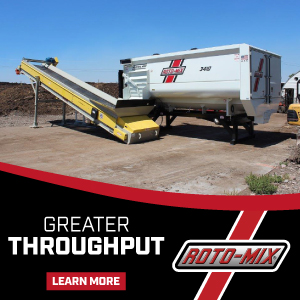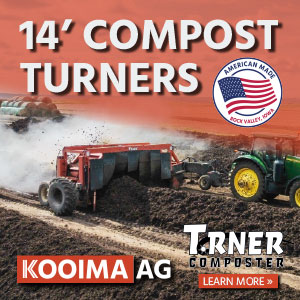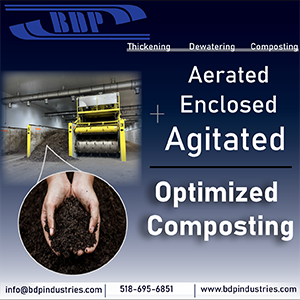Top: Setting up testing equipment at the Puyallup pilot plant. Photos by Jason Berg, WSU
Researchers at Washington State University (WSU) are wrapping up a study on composting emissions that was funded by the state’s Department of Ecology (Ecology) in 2023. Data from the study will be used to help Ecology with air emissions permitting of composting facilities as the state pushes for more composting of food waste and other organics. Much of the previous work on emissions from composting was done in southern California over the last 20 years. (BioCycle’s earliest digitized article on the California research was in 2008, followed over the years by a number of features about the various studies.) Led by Tom Jobson in WSU’s Department of Civil and Environmental Engineering, this study will help develop emissions factors for composting that better reflect modern composting operations in Washington state, including mechanical aeration and common feedstocks, such as mixed food waste and yard trimmings.
WSU’s research has taken place at two pilot plants: one at the Pullman campus in eastern Washington, and one newly built for this project at the Puyallup campus in the western part of the state. The pilot plants, designed by Engineered Compost Systems in Seattle, a project partner, consist of two piles or zones, each composting ~25 tons of material. The pilots mimic pile depth and other dimensions used at commercial and municipal composting facilities. The two-zone design enables testing how pile emission factors may differ due to different pile operations and conditions, such as air flow rate and average pile temperature.
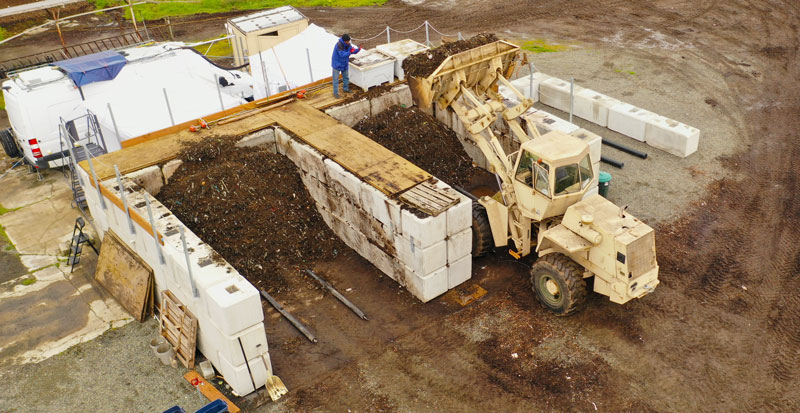
The pilot plants, designed by Engineered Compost Systems, consist of two piles or zones, each composting ~25 tons of material.
At both sites, compost piles are negatively aerated. A large exhaust fan pulls air down through the pile into an aeration duct at a set flow rate that is determined by the test design and controlled separately for each zone. Sampling the aeration duct allows for emissions to be collected from the whole pile. In the duct, air from the pile is continuously sampled for 30 different volatile organic compounds (VOCs), plus greenhouse gases (carbon dioxide, methane, nitrous oxide and carbon monoxide). Emissions from the surface of the pile are periodically measured using surface flux isolation chambers and sampled using California’s SCAQMD Method 25.3. Additional samples taken are analyzed using several EPA-approved emissions test methods for speciated (i.e. individual) VOCs including hazardous air pollutants. For example, samples are collected into SUMMA cans for speciated VOC analysis by EPA Method TO-15 (a method using specialized canisters and gas chromatography/mass spectrometry to measure VOCs on the list of hazardous air pollutants in the Clean Air Act).
While Method 25.3 measures VOCs’ carbon mass in emissions samples, the method Jobson and the team, which includes Doug Collins, a soil scientist with WSU Extension who oversees the Puyallup pilot plant, are using for continuous sampling — Proton Transfer Reaction Mass Spectrometry (PTR-MS) — provides a VOC total mass by measuring speciated VOCs. (Jobson’s mobile lab, built into a van, allows for this sampling.) VOC total mass is a more accurate accounting of actual emissions than the mass of only carbon in VOCs, explains Jobson. Data on specific VOCs emitted will help determine if the U.S. EPA’s requirements for criteria and hazardous air pollutants come into play when determining emissions factors that can help streamline permitting processes for Washington state composting facilities.
The WSU research will conclude at the end of June 2025, with a report on the findings to come in late 2025 or early 2026.


